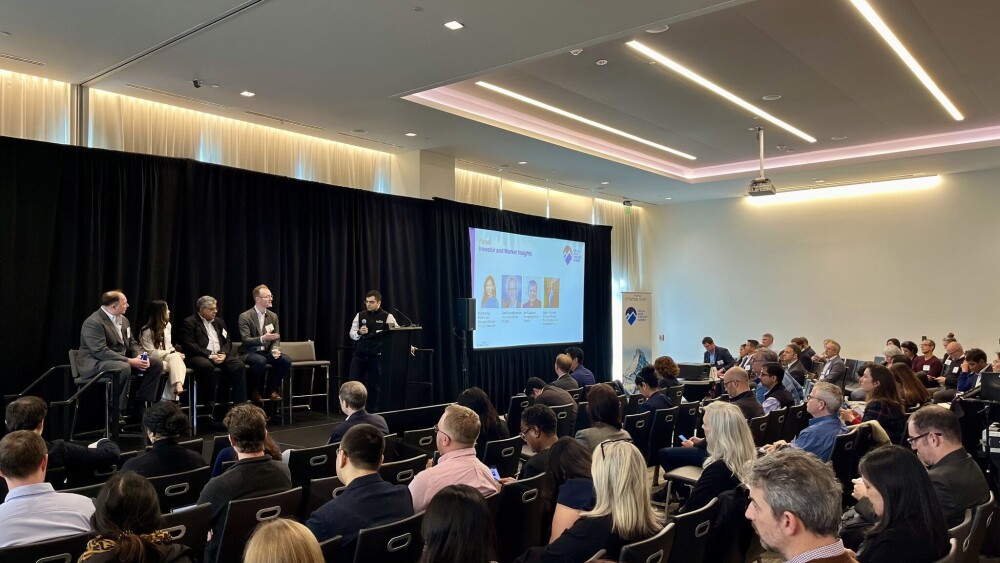In honor of ALS Awareness Month, BioSpace spoke with leading researchers like Dr. Matthew Harms of Columbia University and Drs. Howard Berman and Stanley Appel at Coya Therapeutics.
Lou Gehrig/Courtesy of The Daily Beast
Many diseases dedicated awareness months are obscure, little known to the population-at-large. Amyotrophic lateral sclerosis (ALS), which is recognized in May, is not among these. ALS, also known as Lou Gehrig’s disease for the Yankees’ “Iron Horse” who succumbed to the disease at the age of 37, perhaps draws attention due to its arbitrary nature – only 5 to 10% of cases have a hereditary component – as well as its brutal path of destruction.
A progressive, degenerative neuromuscular disease, the majority of those diagnosed with ALS die within 2 to 5 years of their diagnosis. In the meantime, they will become increasingly paralyzed, in turn losing the ability to walk, talk, eat, swallow and finally, to breathe. I was first introduced to ALS through the movie “Tuesdays with Morrie,” based on the best-selling novel by Mitch Albom, a poignant memoir chronicling visits made by Albom to a favorite professor who was dying from the disease. Since then, I have spoken to some of the bravest humans I’ve ever encountered (patients), and physicians and researchers working hard to unlock the pathology of this relentless scourge.
This month, I spoke with a few more, including Matthew Harms, M.D., leader of the Muscular Dystrophy Association (MDA)’s medical advisory team and associate professor of neurology at Columbia University. Harms compared the complexity of understanding the nervous system to that of making the self-driving vehicles that exist today.
“You had to have the software, the hardware, the battery life, satellites with great GPS to tell cars exactly where they’re located, camera technology; all of these things had to converge. And to treat disorders of the nervous system like ALS, the same thing is true,” he reasoned. “We’re at this exciting transition point where we’ve built kind of the software and hardware equivalents for the study of ALS.”
Harms offered the examples of large DNA repositories and biofluid samples from ALS patients and the aggregation of clinical information about how the disease behaves over time. Another type of “software” comes from a treatment space with a lot of parallels: the MDA’s MOVR (neuroMuscular ObserVational Research) Data Hub, which is a natural history study of individuals living with neuromuscular disease.
Harms explained that the MDA has been funding ALS research since Gehrig’s wife, Eleanor, asked the association to take the disease under its wing. MOVR, he said, follows more than 2,000 ALS patients through the clinic to learn predictors of the disease. “What are the predictors of how people do with the disease; can we predict where things go wrong and when they go wrong in an effort to try to head them off?”
He also expressed excitement over whole genome sequencing and genome or proteome-wide approaches, both of which are being enabled by big data.
Harms referred to the past year as one of “chipping away at and building a foundation…and making incremental progress in understanding the genetics of the disease, understanding what’s going wrong inside of the cell.” He added that it was also a year of progress in figuring out ways to develop drugs that address those cellular problems.
In particular, BrainStorm Cell Therapeutics, Biogen, Ionis and Amylyx have felt the growing pains of this incremental progress throughout the past year and a half. In February 2021, the U.S. Food and Drug Administration turned down BrainStorm’s NurOwn, which comprises autologous mesenchymal stem cells (MSCs) and neurotrophic factors (NTFs), stating that the Phase III trial did not provide the threshold of substantial evidence necessary to approve the drug. This was despite the drug eliciting a robust response in a pre-specified subgroup of patients with early-stage disease.
In October 2021, Biogen and Ionis announced that the Phase III trial of tofersen, which was being investigated for the treatment of SOD1-ALS, failed to reach statistical significance. The companies did observe “trends favoring tofersen” across multiple secondary and exploratory endpoints of disease and clinical function. As for Amylyx, the door has not yet closed on AMX0035, which has a PDUFA date of June 29, but in March, the FDA’s Peripheral and Central Nervous System Drugs Advisory Committee voted against approving the drug by the razor-thin margin of 6-4.
Will the path look any different for Coya Therapeutics? Houston-based Coya is developing a Treg cell therapy called COYA 101 for the treatment of ALS. Coya’s therapeutics target Treg disfunction, which it says is the critical progenitor of the inflammatory pathway.
Coya CEO Dr. Howard Berman, Ph.D. explained that Coya has isolated the dysfunctional Tregs which are found in ALS. “We’ve been able to take hundreds of millions of dysfunctional [tregs], grow them outside the body and convert them to a super-functional Treg state where they’re rejuvenated.” The cells are then frozen and returned to the patients through monthly or bi-weekly infusions for up to a year.
“The key question in ALS is what dictates motor neuron continuing injury and the amplification of injury,” Stanley H. Appel. M.D., the Peggy and Gary Edwards Distinguished Endowed Chair for the Treatment and Research of ALS, co-director of the Houston Methodist Neurological Institute, Coya Therapeutics co-founder and Scientific Advisory Board member, told me. “We know that there are altered proteins within the motor neuron, but we also know that inflammation is a dramatic driver of disease progression.”
While biomarker-driven patient stratification is an established hallmark in oncology trials, “It’s taken a good number of years before anyone has dared to use the term ‘biomarkers’” in ALS, Appel said. The same can be said for most degenerative diseases.
In a study led by Appel and recently published in the Annals of Neurology, Coya demonstrated that COYA 101 enhanced the suppression of proinflammatory biomarkers which, in turn, correlated with a slowing of disease progression in a Phase I study.
The researchers found that “ferroptosis, which is an iron and calcium-mediated impairment of mitochondria at the nerve terminal, is one of the leading ways in which motor neurons can die in ALS.” The new data, Coya said, details the “potential ability to select ALS patients exhibiting a greater chance of therapeutic response to Treg cell therapy (COYA 101).”
That ALS is a heterogeneous disease for which there cannot be a single treatment is now well-understood by those in the know.
“[ALS] is heterogeneous, and sometimes it’s really important, even when a drug doesn’t work in everybody, to look at if there’s a subset that might have benefited,” Dr. Merit Cudkowicz, director of the Healey & AMG Center for ALS, told NeurologyLive. This takes us back to the MOVR hub, which has another purpose: to quickly match patients to appropriate new therapies or trials based on the data collected.
“Inflammation is the common factor to varying extents in different patients, which we feel is dictating the rate of progression in the patients,” Appel said.
For the patients who fall under this common denominator, the results seen thus far by Coya should inspire cautious hope.
In a Phase I trial, COYA-101 stopped the disease progression of three patients given either bi-weekly or monthly infusions. When those infusions stopped and the patients were treated only with IL-2, the decline resumed. “That deterioration was associated maybe as a marker by a dramatic increase in oxidative stress biomarkers in the blood,” Appel explained.
Berman noted that a recently completed Phase IIa trial confirmed these biological effects. Next up, “Our approach is to not waste time because the patients are in desperate need of novel modalities. We just don’t have the luxury of waiting too long.” Consequently, Coya aims to begin a Phase IIb trial in 2023 which Berman hopes will yield a statistically meaningful result and potential BLA.









